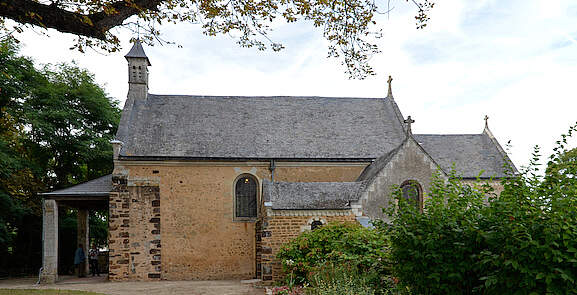
Tucked away from the road in a grove of trees, the Notre-Dame des Vertus chapel has stood in the middle of a garden since the 5th century. It is the oldest shrine in La Flèche (French department of Sarthe, in the Loire Valley) according to Jean Petit, president of the Association of Friends of Notre-Dame des Vertus. It was built at a crossroads during the Christianization of Gaul.
In the 11th century, the lord of La Flèche built a Roman-style entrance, made of tufa and roussard stones, of brick color. The entrance door is the oldest listed movable object in La Flèche, dating from 1470 : it represents a Muslim warrior and evokes the fear of invasion by the Mohammedans after the capture of Constantinople.
Falling into ruins over the centuries, the chapel was entirely restored by the Jesuits in 1644. They convinced King Louis XIII to finance this restoration. They then gave it the name Notre-Dame des Vertus, in honor of the king's pilgrimage to Notre-Dame des Vertus in Aubervilliers (near Paris) to ask for a descendant, and whose prayers were answered by the birth of the future Louis XIV, says Jean Petit.
Although its size is modest, the chapel attracts international visitors: the founder of the city of Montreal, Jérôme le Royer de la Dauversière, a native of La Flèche, came to pray there before sailing to Canada in 1642. This is why visitors from Quebec come to visit the chapel every year.
Mass is celebrated in the chapel every Thursday, from April to October.